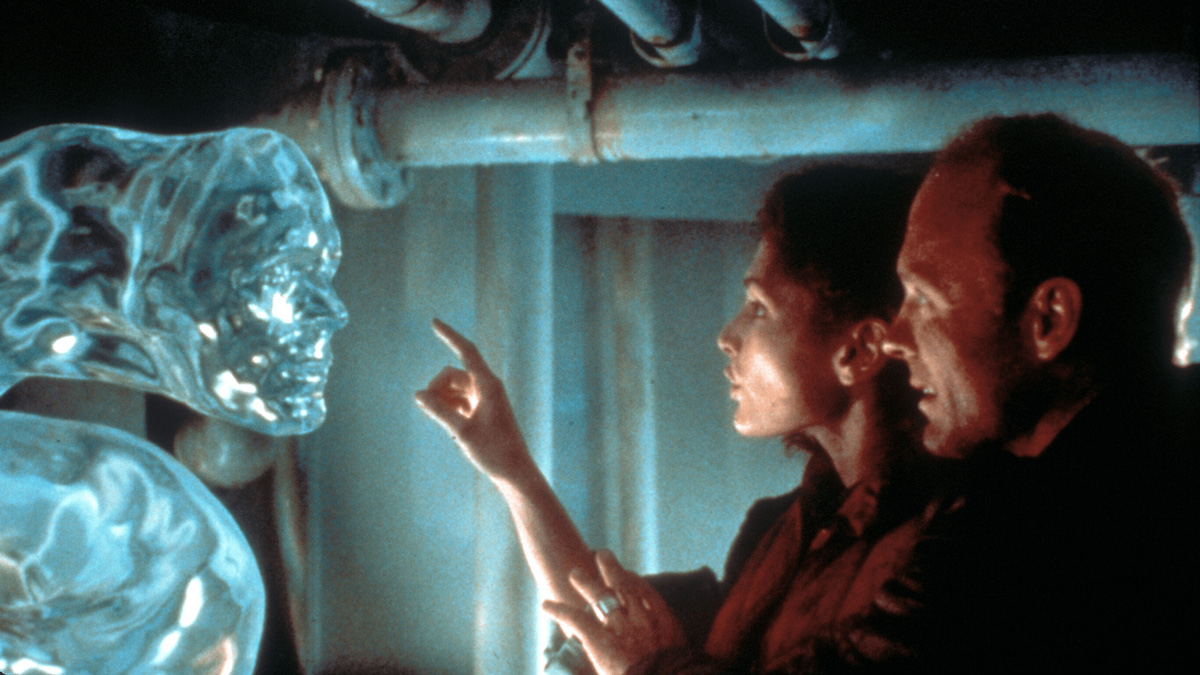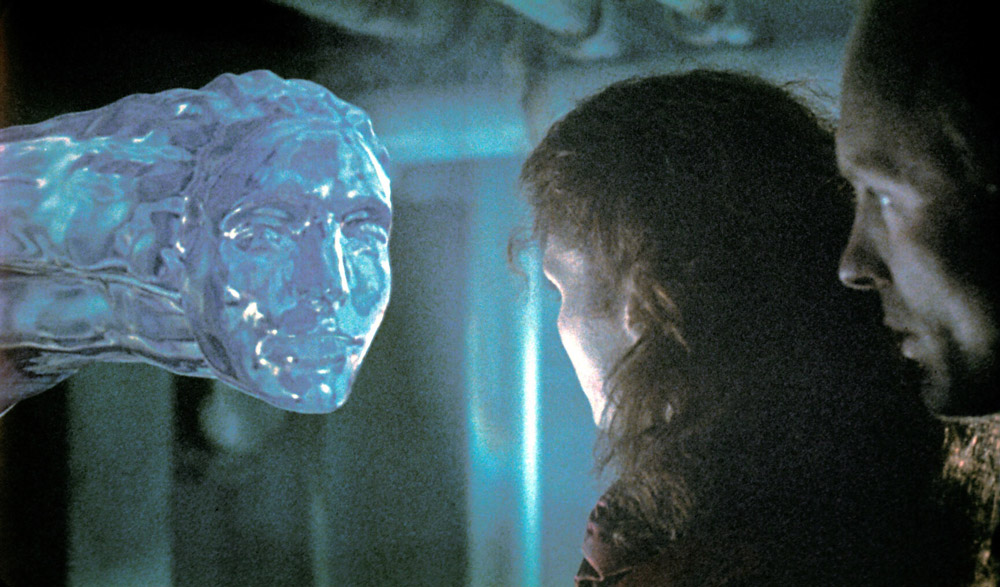
(c) Photofest / Getty Images
The historical significance of ``The Abyss.'' It is “an encounter between James Cameron and CG”
2019.04.22
The gamble of depicting “life” with CG
As mentioned earlier, ``The Abyss'' is not the first time that characters have been drawn using CG. Still, unlike the inorganic stained glass knight, NTI's pseudopods, which can be described as living tentacles of water, have life-like textures, soft movements, and even the feat of imitating a human face. There is a need. It's not hard to imagine that the hurdles for ILM have risen significantly.
When Cameron took one look at the first shot that ILM brought in, in which the fake legs slowly imitated Mary Elizabeth Mastrantonio, who played Lindsay, he was convinced that he had made the right decision.
Using the technology available at the time, it took nine months to create the 20 CG shots, each taking 75 seconds. The live-action portion of the sequence in which the pseudopod appears was filmed as early as October 1988. This is to give as much time as possible to CG production. It is said that an air conditioner hose was used as a marker to direct the actors' line of sight when facing the pseudopod.

“The Abyss” (c)Photofest / Getty Images
A scanner called ``Cyberware'' was used for the shot where the pseudopod transforms into a human face. When Mastrantonio sits still, a laser rotates around him, reading the basic structure of his face and converting it into a 3D polygonal model. Mastrantonio was scanned multiple times, with facial expressions ranging from smiling faces to sticking out his tongue.
For the surface reflections of the pseudopod, 360-degree photographs of the set were taken, including separate reflection and refraction layers, which were added to the CG pseudopod. The images of the pseudopods created in this way were extracted using a scanner and then combined with live-action footage.
Somehow the CG of the pseudopod was completed in time, but there are some CG shots that were abandoned. It was included in a sequence towards the end where NTI causes a huge tsunami to spread across the world. The part where the large wave rises to a height of several tens of meters is a composite of live-action shots of waves taken in Hawaii, but the only shot where the waves are raised and stays still without falling is impossible to capture with live-action footage, so CG was used. I was going to use it.
Due to technical problems, the CG production of this wave was not completed before the film was released in theaters, and the entire tsunami sequence was ultimately cut from the theatrical version. Later, in the ``complete version'' in 1992, which added about 30 minutes, CG of this stationary wave was also added. This anecdote shows that in the late 1980s, CG was still in its infancy and immaturity, and production progressed on a tightrope-like schedule.

